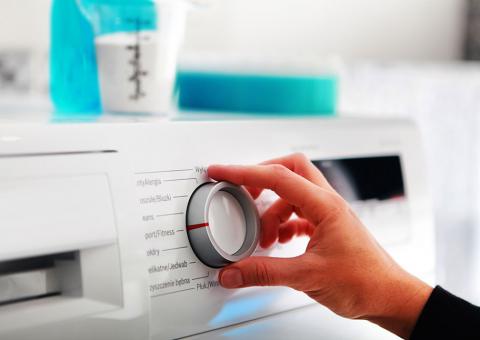What Is ENERGY STAR?
Since its inception in 1992, ENERGY STAR and its partners have saved $500 billion in energy costs for American families and businesses. The ENERGY STAR program, backed by the government, was designed to help consumers save money and reduce greenhouse gas emissions through the promotion of energy efficient products and practices.
By providing credible, unbiased information in a straightforward, easy-to-understand manner, ENERGY STAR–endorsed appliances have been embraced by homeowners, renters, landlords, and businesses alike. Products that have earned the ENERGY STAR certification have undergone extensive third-party evaluations – and as manufacturing and technology evolve, the criteria are revised to reflect that.
ENERGY STAR Certification
For example, the ENERGY STAR specifications for clothes washers, established in 2004, have resulted in a 30 percent decrease in energy consumption – despite a 34 percent increase in the capacity for these appliances between 2004 and 2017. ENERGY STAR–certified washers use about 25 percent less electricity and 34 percent less water than their counterparts.
In 2019, the Environmental Protection Agency (EPA) oversaw robust third-party certification of ENERGY STAR products, administered by more than 20 independent certification bodies and more than 500 labs. From light bulbs and air purifiers to heat pumps and electric vehicle chargers, every product that bears the ENERGY STAR label delivers the efficiency, performance, and savings that consumers have come to expect.
An average of 800,000 ENERGY STAR–certified products were sold every day in 2019 – with a combined market value of more than $100 billion.
The ENERGY STAR Selection Process
In order to be considered for ENERGY STAR status, the EPA has established specifications based on the following guiding principles:
- Product categories must contribute significant energy savings nationwide.
- Certified products must deliver the features and performance demanded by consumers, in addition to increased energy efficiency.
- If the certified product costs more than a conventional, less-efficient counterpart, purchasers will recover their investment in increased energy efficiency through utility bill savings, within a reasonable period of time.
- Energy efficiency can be achieved through broadly available, non-proprietary technologies offered by more than one manufacturer.
- Product energy consumption and performance can be measured and verified with testing.
- Labeling would effectively differentiate products and be visible for purchasers.
Additional Savings Through Rebates
Through partnerships with their local utilities, consumers can save even more by taking advantage of rebates on ENERGY STAR products and appliances, including incentives to retire old, inefficient refrigerators and freezers.
The ENERGY STAR program rewards consumers with lower energy bills, benefits the environment through a reduction in greenhouse gases, and incentivizes manufacturers to advance and promote energy efficiency technologies and improvements to their products.
Key Takeaways:
- The blue ENERGY STAR logo is recognized by 90% of American households, making it one of the most widely recognized consumer symbols in the nation.
- Since the program’s inception, every dollar EPA has spent on ENERGY STAR has resulted in $350 in energy cost savings for American business and households.
- Products eligible for ENERGY STAR status include home appliances and electronics, commercial food service equipment, building materials, lighting, heating and cooling, and more.





